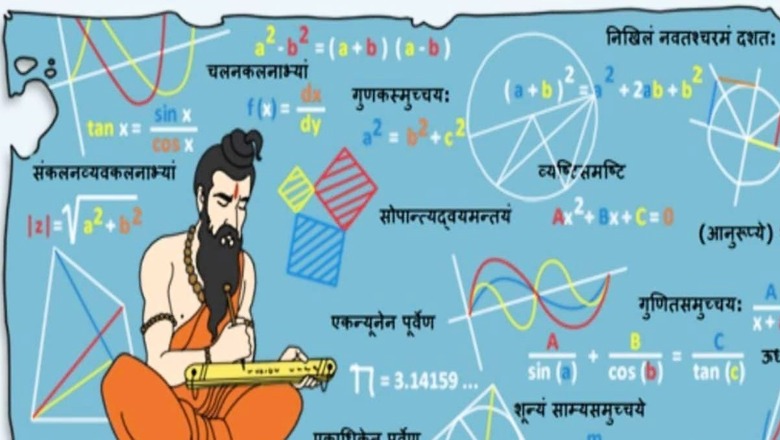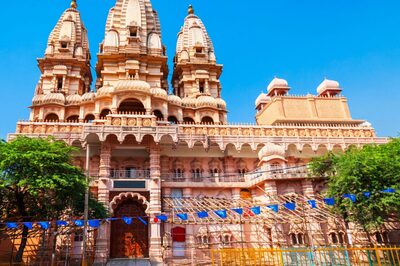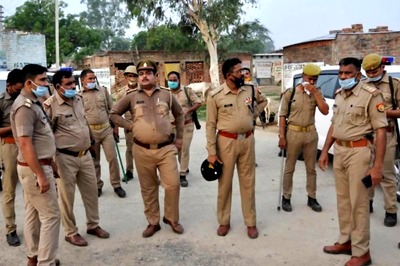
views
On Monday, the Value Addition Courses Committee of the University of Delhi organised a three-day workshop on Vedic mathematics. Organised under the leadership of Prof Niranjan Kumar, I was invited along with Atul Kothari, national secretary, Shiksha Sanskriti Utthan Nyas, an RSS-affiliated organisation that has been taking up the cause of Vedic maths books to be included in school and college curriculums, to give a talk on Vedic mathematics. While Kothari talked about the role and relevance of Vedic mathematics in turning new India into a mathematical powerhouse, the truth is Vedic Mathematics is also a powerful tool to explore India’s real history — the past that has been officially suppressed and ideologically distorted for reasons other than history.
India gained Independence more than seven decades ago, on 15 August 1947, but it still has not got its history right. Even the Modi government, currently in the fag-end of its second term, has failed to put in place any comprehensive change. It’s a valid criticism. After all, the history of India continues to be primarily about its foreign invaders and plunders. It is still a Delhi-centric narrative, where some of the biggest empires are left unattended. The Ahoms, for instance, ruled the Eastern and Northeastern parts of India for over 600 years and had the distinction of defeating the Mughals at the height of their power under Aurangzeb. But they remained largely ignored. Even the Chola and the Vijayanagara empires failed to get the attention they deserved.
But the biggest fraud committed on this civilisational state was to divest this landmass of its indigenous population. We were told that this fertile landmass with numerous sea-like rivers was actually bereft of people. So Aryans came and displaced Dravidians, pushing them down south. This narrative is still going strong despite the fact that the word ‘Aryan’ isn’t a racial term. So, were Dravidians the original inhabitants of India? No, our eminent historians say that they too entered India from outside and forcibly displaced the Adivasis. Some historians even wonder if Adivasis had come from outside. The narrative, therefore, was that India was like a railway platform where different people deboarded at different points in time. This means this territory was as much of the Aryans and Dravidians as it was of latter-day Muslims and Europeans. It belongs to them all, or to none of them.
Given the popularity of this theory, one may assume that there must be hundreds of pieces of evidence — literary, archaeological, astronomy-related or even genetic — to prove such migrations into India, especially the arrival of the Aryans. The truth is there is not a single credible evidence to back this theory. In fact, if there’s any evidence it’s about out-of-India migration. The Puranas, the Mahabharata — they all talk about people moving out of India. This was countered by maligning the Puranas, questioning their veracity and projecting them as a product of Brahmanical imagination.
As for the archaeological evidence, it suggests that the Saraswati river, the most praised river in the Rig Veda, dried up around 1900 BC, at the same time the so-called Harappan civilisation collapsed. Initially, we were told that the Harappans were vanquished by Aryans. Some of our well-known historians, now mostly out of favour, would invoke poor Indra for his role in destroying Harappan forts! Here too there was no archaeological evidence to back this grandiose claim. But when it became difficult to justify the “invasion”, they quietly moved to “migration”. Now these hordes of people were not projected as invaders; they came to India quietly and their numbers were very minuscule too.
The migration theory was even more ludicrous than the invasion one. Despite being largely illiterate and overwhelmingly pastoral people, and despite the fact that they came in small numbers, these Aryans managed to supplant an urban civilisation that was numerically superior, economically prosperous, and technologically more advanced. The Harappans even disowned their own language to adopt Sanskrit. The reality is that culture and language are very sticky in nature; they are hard to supersede even when the entire country is converted into another religion. Khomeini’s Iran and Islamist Pakistan are apt examples.
This is where the role of Vedic mathematics becomes important: It can help expose the distortions in Indian history, besides bringing out India’s contribution to the making of the world civilisation per se.
A closer, unbiased study of Vedic mathematics has shown that the commonly held view of Mesopotamia being the cradle of civilisation may not be true. The late American mathematician, Dr A Seidenberg, in his paper, ‘The Origin of Mathematics’, writes about the existence of two distinct traditions in ancient mathematics: The algebraic or the computational, and the geometric or the constructive. “If it could be shown that each of these has a single source — and there are many rather familiar facts that suggest this is so — and if, moreover, in both cases, the sources turn out to be the same, it would be plausible to claim we have found the unique origin of mathematics,” he writes.
The common source, as per Seidenberg, was Vedic Mathematics — the mother of all ancient mathematics. Given its connections with Egyptian and Babylonian civilisations, he pushed Vedic mathematics (Sulbasutras) as far back as 1700 BCE. But facing intense protests from Sanskrit scholars of that era, he began searching for “an older mathematics very much like it”. He even went on an elusive trip to Iran looking for such a text. It’s unfortunate that Seidenberg died without realising the full importance of his own work.
Today, when the Aryan Invasion/Migration Theory is busted, and new scientific and archaeological discoveries are pushing the antiquity of the Indic civilisation by thousands of years, Seidenberg’s assessment seems to be true: That the sciences, including mathematics, were nurtured in India long before Mesopotamia and Egypt. The two civilisations, in fact, borrowed from India. Navaratna Rajaram and David Frawley write in their book, Vedic Aryans and the Origins of Civilisation, “The evidence of the Sulbas, notably the fact that Old-Babylonia and Egypt both derive their mathematics from them, places the early Sutra literature firmly before 2000 BCE, the date of the Egyptian Middle Kingdom.”
Interestingly, astronomical references in the work of Asvalayana push this date for the Sulbasutras even further — to around 3100-2600 BCE. This received additional support from other astronomical observations, including one mentioned in the Satapatha Brahmana. This is very much in line with the Indian tradition, write Rajaram and Frawley, which “places Asvalayana about five generations removed from the Mahabharata war. Baudhayana also belonged to the same period, perhaps a generation earlier”. So, Vedic mathematics and ancient astronomy both vindicate the traditional date given for the Mahabharata war, which is 3102 BCE.
As mentioned earlier, the archaeological evidence being thrown at us currently suggests that the Saraswati river dried up around 1900 BCE. That means the Rig Vedic period must have been in existence well before this date. Interestingly, when we read the Mahabharata, we find evidence of the Saraswati river drying up. There is a story of Balaram, the elder brother of Lord Krishna, going on a pilgrimage after the Mahabharata war. And in this context, Balaram finds the river suddenly vanishing at a place called Vinasan in the Thar desert, to appear again a few hundred km later.
There can’t be any more graphic evidence of the Saraswati drying up — the same river that has been praised profusely for being “the mother of all rivers”, the largest of them all! So, from the Rig Vedic period to the Mahabharata era, Saraswati saw its transformation from being the biggest of rivers to the one fighting for its survival. And by 1900 BCE, it had disappeared. Incidentally, Saraswati’s disappearance coincided with the fall of the Harappan or Indus Valley Civilisation, which is rightly called by many as Indus-Saraswati or just the Saraswati civilisation, as most of the sites are found near its banks. To add to it is the fact that the excellent city planning of the Indus-Saraswati civilisation fits in well with the notions of the Sulbasutras!
With Vedic mathematics finding more acceptance in new India, where modernity doesn’t find itself in contradiction with India’s civilisational mores, one hopes it taps into the innate mathematical brilliance of the average Indian and makes the country a mathematical powerhouse it once was. But as the article suggests, Vedic mathematics can also be a powerful tool to explore India’s history and rescue it from its politico-ideological distortions. And most importantly, it would give India its due in the making of the world civilisation: It was, after all, India’s mathematical brilliance that was behind the successes of the Egyptian and Babylonian civilisations. Sulbasutras are living proof that India, and not Mesopotamia or Egypt, was the mother of world civilisations.
Today when Prime Minister Narendra Modi calls for India to become a “Viswaguru”, he isn’t saying anything new. He just wants the country to reclaim its old civilisational position — a position that it lost unceremoniously a thousand years ago.
(The article is based on the author’s ‘Special Address’ at the inaugural session of the three-day workshop for educators on Vedic mathematics at the University of Delhi on 11 April 2023)
The author is Opinion Editor, Firstpost and News18. He tweets from @Utpal_Kumar1. Views expressed are personal.
Read all the Latest Opinions here




















Comments
0 comment